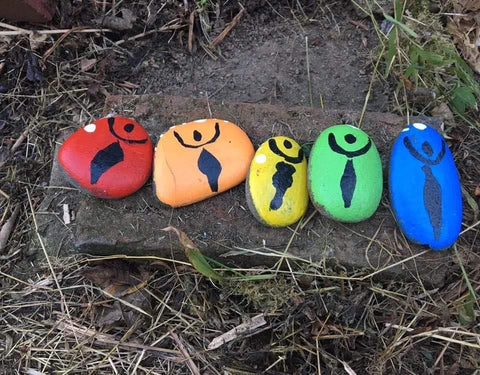In many indigenous communities, the color red is understood to be a symbol of life, wellness, and healthy spirit, and thus is a sacred color.
The coming of age ceremonies and initiations into distinct elements of a woman’s moon (menstruation) have been generally performed through sacred rites, shifting young girls toward a spiritual path to embrace their newly acquired powers, and to explore the beauty of their womanhood through the relationship with the Earth, Nature, and, of course, the Moon.
In contrast with the modern western idea of treating menstruation as taboo or impure, indigenous communities have treated this special time as a sacred communal process to assist young women with finding a path to a healthy spirit and as a welcome to their powerful being.
In the Native American communities specifically, the moon time was honored, celebrated and facilitated through sacred rites, teaching young women to respect themselves as well as understand their powers and their bodies. The major source of this cultural knowledge comes from the perspectives, guidance, and instructions of elder women and grandmothers.
This tradition was nearly lost over the past 100 years due to American and European contact, but, fortunately, has been revived in the 1990s by the Brave Heart Women’s Society of the Yankton Sioux/Ihanktonwan Oyate Reservation in South Dakota.

Every year, the Brave Heart Women’s Society holds ceremonies teaching girls ceremonial songs, modestly, courtship, pregnancy, nutrition and also suicide prevention, a serious problem within the communities.
Within the context of the Native American communities, the development of community wellness is impeded by the lack of resources and the nuanced issues involved in the ways in which the communities address the recovery from federally-imposed systems of deprivation.
On the path to the traditional revival of the coming of age ceremonies, women are looking for ways to move away from chemically-treated disposable feminine products and toward more traditional and sustainable alternatives. “It’s important for young girls to know how to make their own moon pads to take responsibility and assume full agency to participate in a coming-of-age ceremony,” notes Frieda Big Road, Oglala Lakota Unci (grandmother) from the Pine Ridge reservation.
As part of the rites, the ability to work with menstrual blood by not flushing it down the toilet but honoring it in accordance with the earth-honoring traditions is also integral.
Antinanco and PAZA have been working alongside several Native American communities to support their needs during these challenging COVID-19 times. We thank June Cup for supporting the Native COVID-19 Response campaign with menstrual cups, contributing to the collective effort to revitalize and empower indigenous women.
Olga Sher, Antinanco
Maria Roganese, PAZA, Tree of Life

